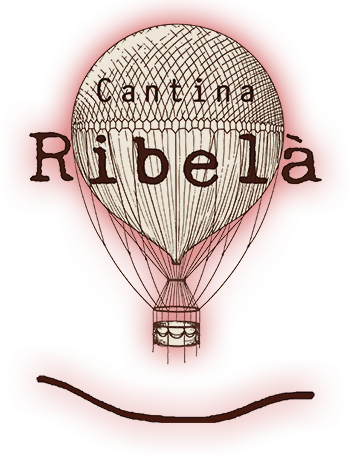There is a bond between wine and the recovery of soil vitality. However, it is necessary to acknowledge a sense of history which can be reached looking into the underlying motivations of farmers’ practices.
This is how tradition becomes an ally for nurturing innovation
Sandro Sangiorgi, L'invenzione della gioia, Porthos edizioni, 2012
All texts translated by Catia Dos Santos
HISTORY
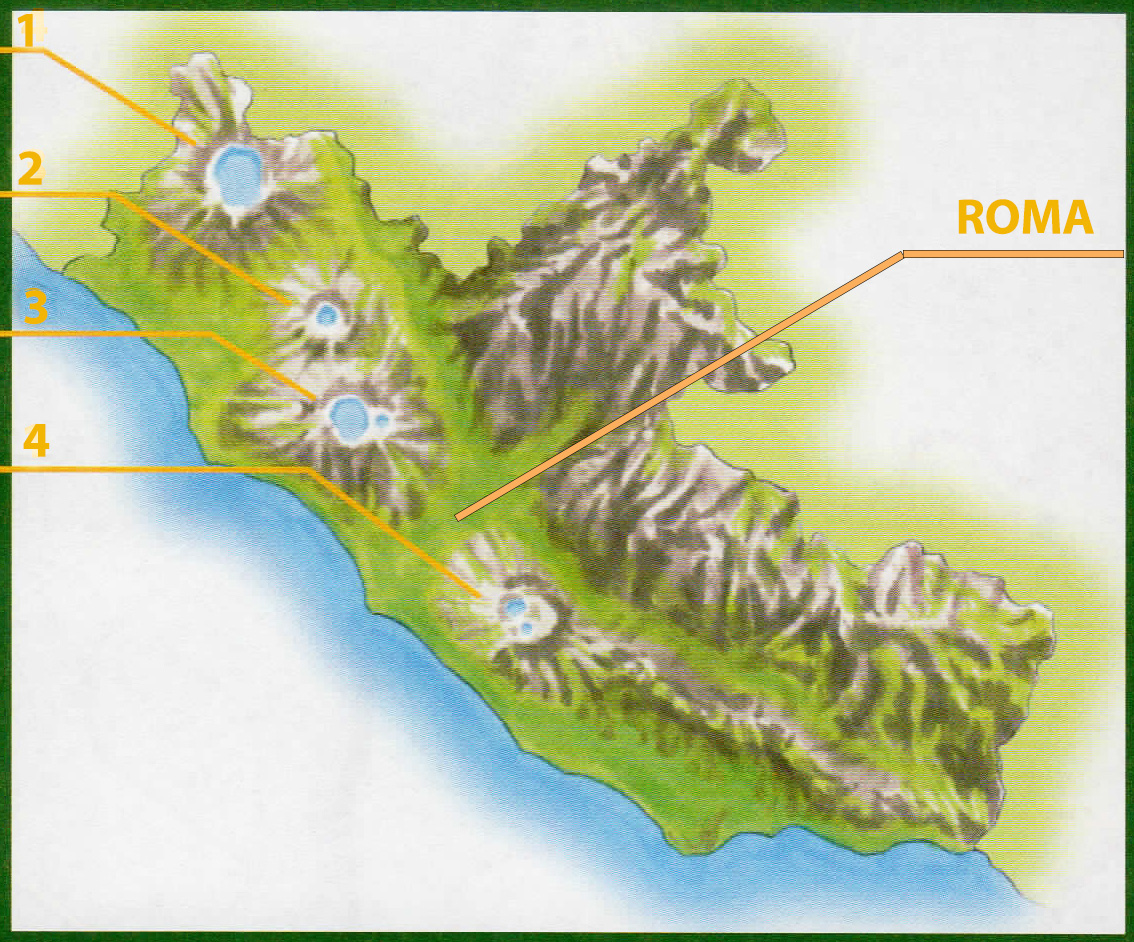
Around 3 million years ago, most of current Latium lay under the sea. Only the Lucretili, Tiburtini, Prenestini and Lepini mountains surfaced, while the peaks of present-day Cornicolani, Soratte and Tolfa mountains along with the Circeo were islands. Subsequently, around 2 million years ago, the sea floor lifted after intense teptonic activity, creating a large lowland area. Parts of the sea water remained trapped in huge salty, non-deep lakes by the Lupini, Tiburtini and Prenestini mountains and along most of the pre-Appenine belt. In the last million years, volcanism has modelled the shape of Latium and made it the way we know it today. A series of volcanic apparatuses has pierced the sedimentary layers from North to South due to the eruptive complexes of the Volsino (1, now Lake Bolsena), the Cimino-Vicano (2, now Lake Vico), the Sabatino (3, now the Bracciano and Martignano lakes) and finally, in chronological order, the Latium Vulcano (4, now with the Albano and Nemi lakes). The Latium Volcano begun its activity about 600,000 years ago, emerging south of the Roman plain as a volcanic cone with a 60-km base. This activity can be divided into three main phases, each lasting thousands of years and interspersed with long periods of stasis. 
During the first phase, the most important one, a high amount of material totaling around 200 cubic km was erupted. In this period, several pyroclastic flows of “red pozzolan”, reaching 90m thickness in some parts, were deposited along with other material, which would create “lithium-based tuff”, followed by intense effusive activity. Such activity, ended with the collapse of the upper part of the volcano crater, determining the creation of a mountain range called Tuscolano-Artemisia caldera, most of which is still visible. During the second phase, which took place after a quiet period, a smaller volcano arose at the center of the previous volcano caldera. This period of activity was smaller in terms of quantity of product erupted as the materials leaked were around 2 cubic km. In the last phase, concentrated in the north-western side of the volcano, water and glowing magma met at great depths. The ensuing pressure resulted in violent explosions which gave birth to the volcanic lakes of Nemi and Albano. In ancient times, there were several lakes but over the centuries most of them dried up because of human activity. It is likely that the populations who first settled the area coexisted with the final eruptive phases of the Latium Volcano.
The multitude of archeological remains dating back to the Roman times are of great interest. Among the greatest, there are the complex of the ancient city of Tusculum, with its well preserved Theatre dating back to the 1st century BC, the remains of the Forum, the so called Tiberius Villa, and several sepulchers. Close to our vineyards you can see the remains of the Domitilla Villa (1st century BC) and that of Matidia Augusta (1st century AD). Important archaeological sites are also located in Albano, Ariccia, Nemi and Lanuvio.

The Tuscolane Villas below, portrayed by Greuter in 1620, are of great historical and architectural interest. Dating back to the Renaissance period, the villas are located in the areas around Frascati, Monte Porzio Catone and Grottaferrata, along with their Italian gardens. Villa Aldobrandini, Villa Falconieri, Villa Torlonia, Villa Grazioli, Villa Rufinella, Villa Mondragone are the most important ones. The presence of these villas, owned by the most renowned and wealthy Roman families of the time, such as the Borghese family, has contributed in preserving and strengthening agricultural traditions in the area, in particular wine-making. There is evidence that several visitors used to come the area during the Gran Tour.
In the modern period, after the construction of the Monte Porzio Catone Astronomical Observatory, there has been a sharp increase in the number of Research and Physics institutes in the Frascati area.
The historic events we mentioned and the proximity of a city like Rome have made these places highly populated. Numerous human activities have basically redesigned the original features of the plant environment of Colli Albani, the Alban Hills. A large proportion of the downy oak vegetation was replaced with crops and pasture, while the original ancient wood was mainly replaced with chestnuts, used for repeated cutting. The chestnut, which found in these volcanic soils a perfect habitat for its growth and development features, was implanted for the multiple uses it was suitable for: building and naval constructions, furniture, vats, tubs and baskets in viticulture. This brief history aims to restore the image of a territory that has undergone several changes over time, positively or negatively accompanying human activities in their agricultural and cultural evolution. Wine is emblematic in this respect.
Texts taken and partly adapted from the Castelli Romani Park Guide
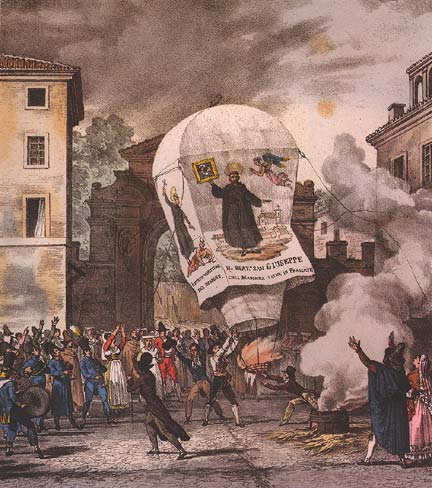
Title: Ballon de Fête religieuse
The preparatory drawing of the lithograph was made by Antoine Jean Baptiste Thomas on his trip to the Castles between 1816 and 1818.
Later watercolor by Francois Le Villain in 1823.
Description: The flight of the baloon during the procession of San Giuseppe Calasanzio in Frascati
SOIL
Talking about this terroir, special attention should be paid to the soil, in particular the valley where our vineyards lie. In fact, the geological history by and large divided into eruptive phases, does not honor the great complexity and difference between slopes and micro-zones and their peculiarity. As shown in the annexed urban management plan (PRG), Pentima is characterized by three zones. The light blue zone consists of deposits ranging from silty clay to sandy silt in the valley floor and impluvium areas. The pink zone is the “Villa Senni Eruption Unit”, massive pyroclastic deposits made of scoriae including lithic deposits in an abundant, weakly-coherent, coarse cineritic matrix. The surrounding yellow zone consists of porphyritic lithoidal lava flows which are leaden-gray-colored and weakly cemented. Specific soil analyses, conducted by the Vitanova research group, showed a sand (70%), silt (22%) and clay (8%) composition, a high pH and very high values of potassium and sodium, compared with the standard. This shows the mineral peculiarity of wines that involves flavor more than acidity.
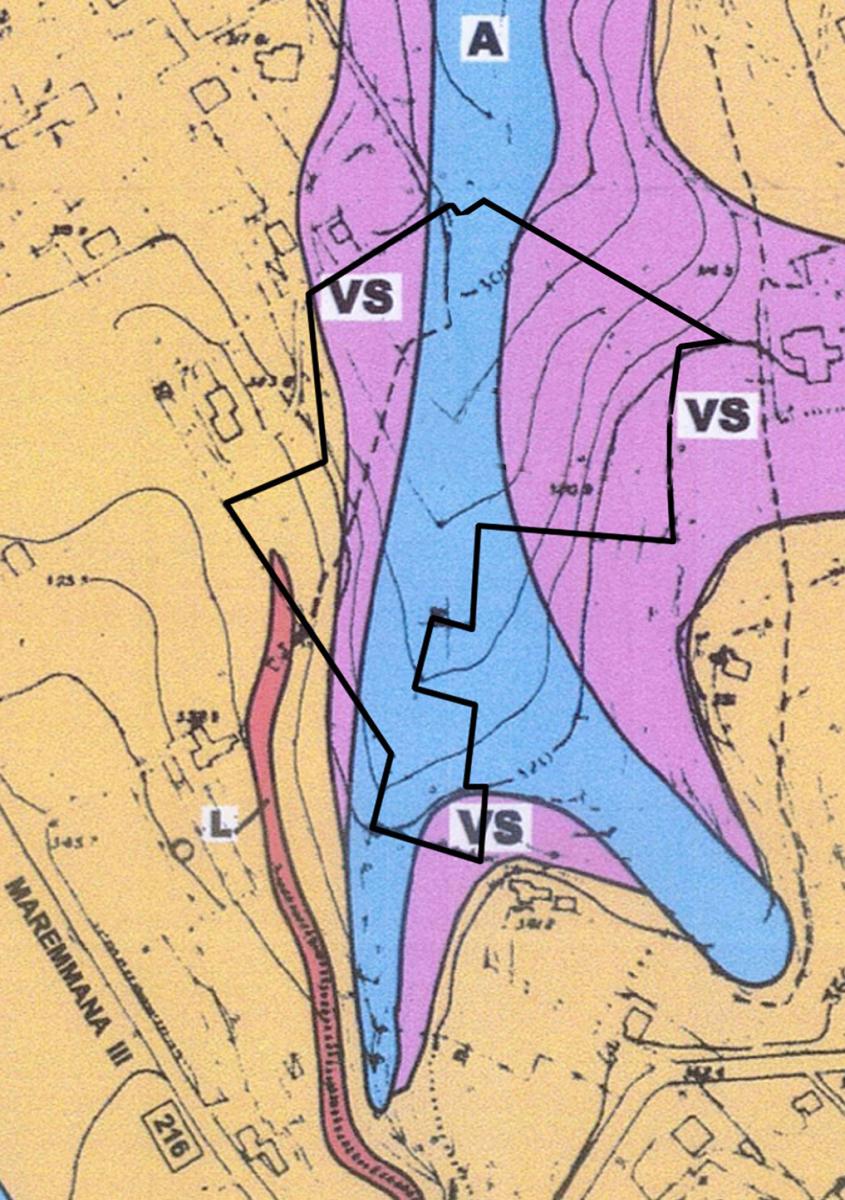
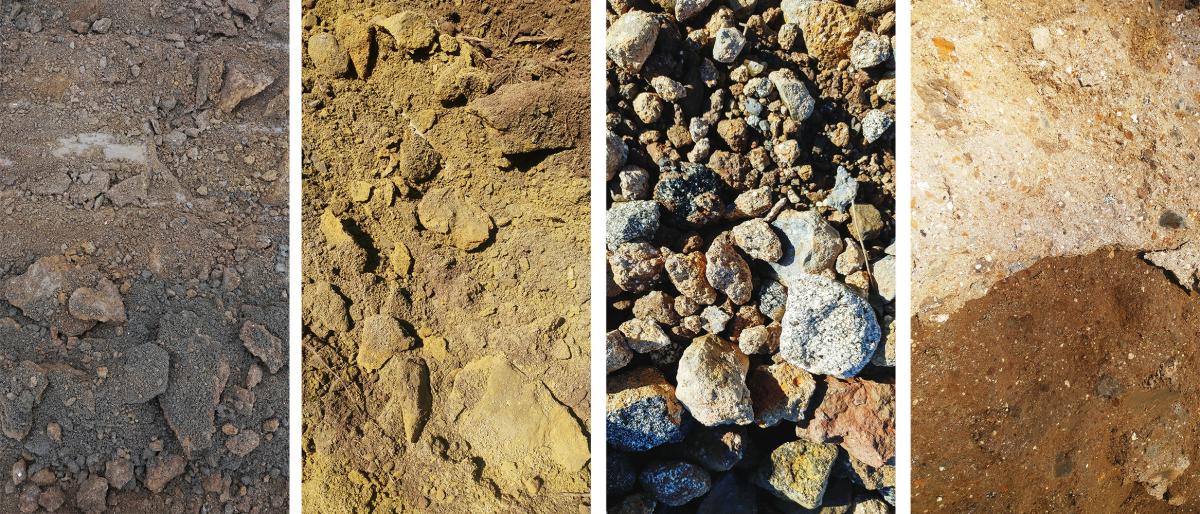
GRAPES, WINE, PEOPLE
The grapevine characterizing the genius of the Castelli Romani wine is Cesanese, which we did not hesitate to recognize as one of the best Italian grapevines and we even dared to call our pinot.
Mancini C. 1888, Viticulture and winemakin
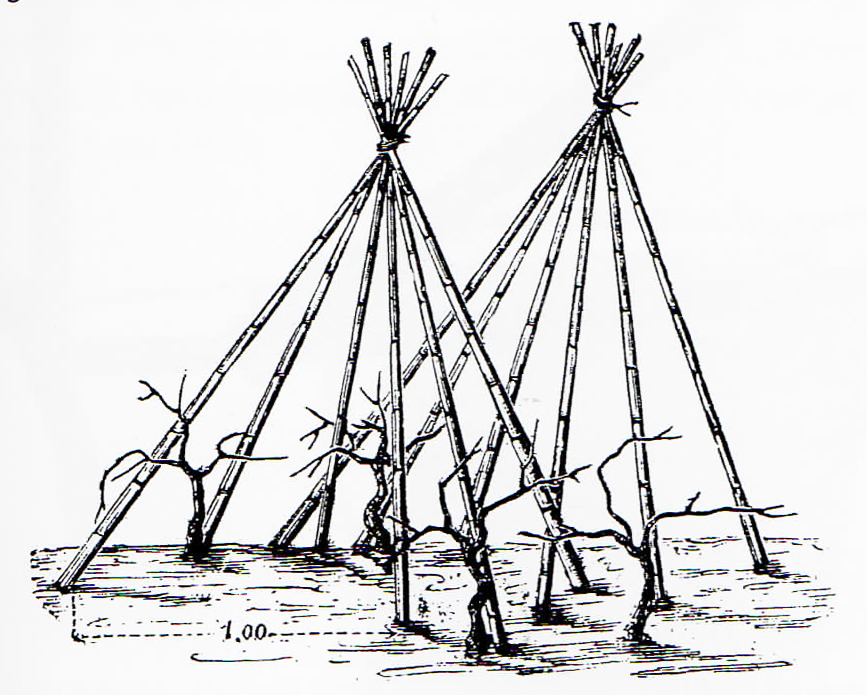 A “conocchia” vineyard, in a picture taken from Mancini’s book, represents the way vineyards used to be grown in the Castelli Romani area. Every year, a cane bed was build. When a vineyard was bought, reed banks had to be included, in line with the saying “a vineyard cannot live without a reed bank, as a woman cannot live without a husband”. These are the words by Antonio Cugini from Marino in the book “Life of a Winemaker”, curated by Maurizio Taglioni.
A “conocchia” vineyard, in a picture taken from Mancini’s book, represents the way vineyards used to be grown in the Castelli Romani area. Every year, a cane bed was build. When a vineyard was bought, reed banks had to be included, in line with the saying “a vineyard cannot live without a reed bank, as a woman cannot live without a husband”. These are the words by Antonio Cugini from Marino in the book “Life of a Winemaker”, curated by Maurizio Taglioni.
Arriving in such an important area in terms of traditions, stratification and contradiction has been a source of stimulus and inspiration that means the world to us. When we decided to buy the vineyards in this area, which is being given little consideration now, we thought “we still have time…” to try to put this great tradition together with our committment as young winemakers. Our production choices are led by analysis, experience and exchange of views with this century-old culture of growing grapevine and making wine. This is what saves us from ephemeral trends wine is often subjected to.
The following testimonials were taken from the beautiful book “A Whole Village as a Tavern” – Diffused Museum of Wine, Monte Porzio Catone, curated by Simona Soprano (ed. Exorma, 2010).
"We used to make the Romanella during Easter Week. First of all, wine was not clarified. Then, it was put in a bottle so that it fermented and became slightly sparkling. It was made of Trebbiangiallo"
Leonilde, 85 years old, Zagarolo
"Today, must is fermented with skins only for red wine, while for white wine, the liquid parts of the must are immediately separated from the solid ones. White wine fermented with skins had an amber colour, but this view no longer seems to please anybody. It was more robust of today’s white wines, though, it was full-bodied, rich in polyphenol and had all the substances that are now considered good for the heart, the circulatory system, and the health in short. Nowadays, white wines are no longer fermented on their skins, they are clarified, and filtrated… All the good substances are taken away… What is left?”
Bruno, 63, Genzano
"Here in Genzano, red wine was made combining Cesanese and Aleatico. It was a dry wine, with all the sugar fermented, full, tasty. There was also a song which said: ...We have a good wine / Aleatico and Cesanese / it is the only trade / employing the Genzanese / we have a good wine / it moisturizes the throat / it makes you forget your debts / it makes you speak up your mind…”
Fernando, 74, Genzano
"Both Passito and Cannellino were made with selected grapes. Maybe, we made them wither on the plant, cutting the vine shoots so that the sap wouldn’t reach it and the grapes would become lighter and sweeter, more concentrated. Someone still does it, very little. Actually, everyone makes a little on their own. If you did it with Malvasia puntinata, you’d call it Cannellino. If it was made with Trebbiano, you’d call it Passito. You only drank it for special occasions, celebrations, weddings... It was served with sweet and with pheasant, partridge, hares and boars as well".
Giovanni, 80, Monte Porzio Catone
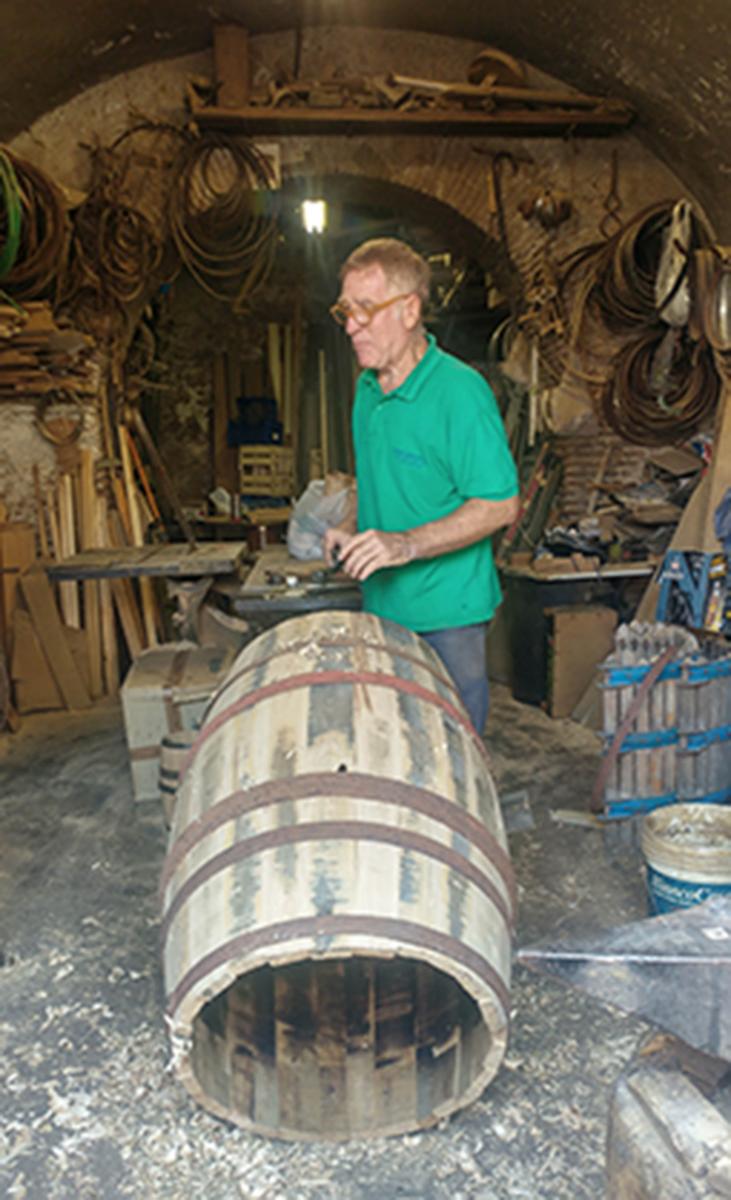
Recovering this knowledge and know how connected with an artisanal dimension of winemaking, led us to the discovery of different people with whom we cooperate. Above all, Alfredo Sannibale from Albano, the last cooper of the Castelli Romani. He made the three barrels we have in our cellar - two of them are made of the local chestnut, the other one is made of wild cherry from our land.
Here are some of his words showing how the job of winemaker, and everything related to it, have changed in the past 50 years: “When I was a boy and my father was here, in Albano, there were nine coopers working full time. We all worked. Then, starting from the 1960s, we saw a decline in the workload because social cellars and similar things started to appear. After the 1970s there was a mass exodus from agriculture. It was the end for small-scale producers and the end for coopers”.
Talking to him means reconnecting with a culture of wine that is vanishing. Yet, we believe it should be passed on to be contextualized.
Below you can find the link to a very interesting project Alfredo took part in: The Experimentum Mundi orchestra, directed by Giorgio Battistelli.
